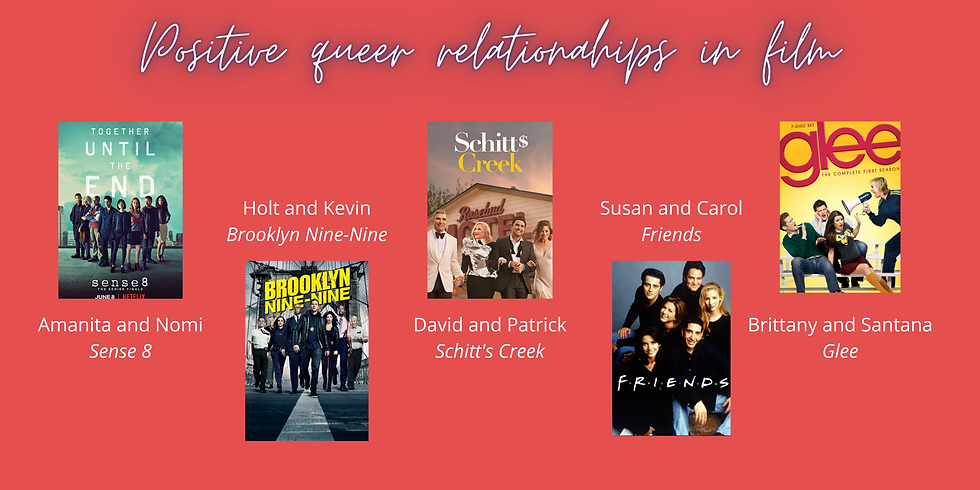Why queerbaiting is a serious problem
- livvygarrett
- Dec 15, 2021
- 2 min read
Updated: Jan 28, 2022
Queer representation in the film industry may be growing but so is the wallet of those who put it there. Within this lies the problem of queerbaiting.

Natural chemistry is hard to describe but easy to spot. For filmmakers and fandoms alike the best you can ask for is two actors with a palpable and electric relationship. Then it’s like the gift that keeps on giving, as a viewer you wait each week for those moments; the looks, the brushes past, the bits that keep you hooked. As a writer or producer however, the pressure is on and what matters is how you capitalise on that chemistry.
Unfortunately, many do just that: capitalise on it, especially when it’s two actors of the same sex. This is known as 'queerbaiting'; When a writer dangles the potential of a queer relationship over our heads with a fishing line without ever delivering what we truly want. Actors will stand extraordinarily close or hold each other while in tears, or ‘whoops! They fell on top of each other.’ All of this contributes to the toxic cycle of using queer bodies and love stories as a glorified form of clickbait and never actually giving the LGBTQ+ community proper representation.
Of course, it’s not always possible to predict what pairing will work on a TV show or what ‘ship’ the fandom will pick up on. Take Teen Wolf for example, Dylan O’Brien’s character Stiles was already written as in love with Holland Roden’s hidden genius Lydia. Yet early into series one the chemistry between O’Brien and co-star Tyler Hoechlin, who played brooding werewolf Derek Hale, was beyond clear to see. And so began the fan-fictions, the art, the ‘Sterek’ poems. However, rather than acknowledging this chemistry, and looking into the deeper layers of their characters, the writers chose to consistently put them in close-knit situations and charged moments.
All of this contributes to the toxic cycle of using queer bodies as a glorified form of clickbait
There is something deeply malicious about the idea of using queer themes for gain rather than genuine exploration. With representation as low as it is, getting a viewers hopes up that they might be seeing themselves on screen and then taking that hope away, is a very dark part of the film industry. Supernatural, Merlin, Harry Potter, all major productions that had the chance to expand and add depth to their core characters. Instead, they hoped to gain some inclusivity points by throwing in an ‘I love you Dean’ and pat themselves on the back for being forward thinking.
If the film industry really wants to be more inclusive and representative, then this is not the way to go. Sexuality is a core part of people’s identities and it deserves the space to be explored and developed in a graceful and respectful way. Whether it’s a gooey romance or a sci-fi adventure, LGBTQ+ characters should not be used for gain but growth.


Comments